#H. W. Wessolowsky
Explore tagged Tumblr posts
Text
Who is Captain Future?
New Post has been published on https://esonetwork.com/who-is-captain-future/
Who is Captain Future?
The Big Bang Theory
This month (for me, anyways) has been all about Captain Future. I have been living, breathing, eating and sleeping Edmond Hamilton’s pulp era science fiction hero.
But who is Captain Future? Popular in his hey day, the 1940’s, the final decade of the pulp magazines, today he is an obscure character, encountered by the younger generation either through an almost equally as obscure Japanese Anime series or through the medium of the sit-com The Big Bang Theory as a somewhat prominent poster on display in Leonard and Sheldon’s apartment.
None of which answers the question: Who is Captain Future?
For that answer I turn to the Hugo award winning science fiction writer Allen M. Steele.
Cover art by Earle K. Bergey
“Captain Future is a creation of Edmond Hamilton,” says Steele. “The legend is that in 1939 at the World Science Fiction Convention the publisher of Startling Stories, Mort Wesinger, went to the convention in New York city and was so impressed by the turnout and the enthusiasm of the fans that, on the spot, he announced that they were going to create a new magazine called Captain Future.”
The actual story is a little more complicated than that, Allen explains. “By the time the World Science Fiction convention rolled around Better Publications had already decided that they wanted to publish a ‘hero’ pulp to compete with Doc Savage and The Shadow and The Avenger and other characters who were very popular at that time.”
Weisinger had come up with a character he called Mister Future who was the world’s smartest man and had this huge head. He lived on top of a skyscraper and he had an alien being named Otho who lived in his ring. He took his idea to science fiction writer Edmond Hamilton.
“Hamilton said: No this isn’t going to do, so he borrowed a little bit of Doc Savage and a little bit of Batman and various other creations that were out there and he came up with something entirely new. That was Captain Future.” Steele explains.
Cover art by Tommy Pocket
“The first issue appeared in late 1939. It was a quarterly magazine and Hamilton wrote all but three adventures. It lasted until the mid-1940’s and, like so many other pulps, was killed off by the wartime paper crunch. Some more adventures were published in Startling Stories for a couple of issues after that. Then he went away for a while. The series was briefly revived in 1950 as a series of short novellas, again, in Startling Stories.”
The character went away again in 1951. “They said: It’s going to go on a short hiatus,” Steele explains. “And that hiatus ended up lasting until I revived the character a few years ago. Basically Captain Future is a spacegoing version of Doc Savage. Doc Savage was an early predecessor to James Bond and a lot of other characters. He’s a troubleshooter. He’s a hero. Hamilton’s version of the character had him being a super scientist.
“He’s an adventurer, and he has this weird cast of characters, the Futuremen. They go about the solar system righting wrongs, protecting the common man and fighting the good fight. This is something that attracted me a great deal when I read those adventures when I was a kid.”
Cover art by M. D. Jackson
So much so, that Steele took over the mantle from Edmond Hamilton and began writing new adventures featuring the pulp hero. “One of the first Captain Future novels I read was Outlaws of the Moon. My first Captain Future, Avengers of the Moon, was very much an homage to that particular title.”
Avengers of the Moon was published by Tor Books in 2017. For Steele it was a dream come true and one he wanted to continue. Unfortunately the editor who signed off on the project died. His replacement was not as interested in continuing with the series.
Fortunately Steve Davidson and his Experimenter Publishing Company, picked up the idea. Steve, the publisher behind the revival of Amazing Stories Magazine, has been releasing a series of novels under his Amazing Selects imprint, and Allen Steele’s Captain Future novels are among those releases.
Illustration by H. W. Wessolowski
The books are fully illustrated, much like the Captain Future novels from the original pulp run. This is where I come in.
The second Captain Future novel began with a longer story called Captain Future in Love. It was serialized over two issues and I was fortunate enough to be tasked with producing the cover art for the second issue.
The story was re-printed by Amazing Selects, followed by the next two instalments of an overarching story. The Guns of Pluto continued the story as does the sequel, 1500 Light Years from Home. Both books feature black and white illustrations.
Illustration by M. D. Jackson
This, for me, has been an incredible opportunity to pick up where pulp artists Earle K. Bergey who painted the covers, and Hans Waldemar Wessolowski, credited as H. W. Wessolowski (also sometimes simply as as “Wesso”) who drew the interior illustrations. As a life long fan of the pulp magazines, this is obviously a dream assignment.
I have completed the illustrations for 1500 Light Years from Home and the book is scheduled to be released sometime in the next month. I am hoping to be involved in the fourth and concluding instalment which will be released either later this year or early 2022.
But there was to be an unexpected bonus this month. I had got wind that a magazine, The Pulp Fan, was on the lookout for artists to provide portraits of pulp characters. I contacted the publisher, Jim Main and asked if there was anything that I could do. He suggested that I could paint a portrait of Captain Future.
This was the icing on an already delicious cake. The Allen Steele Captain Future books have been “updated”. The science has been brought into line with what we know now about the solar system. Steele didn’t want to have the setting be the “quaint” one that Edmond Hamilton had created. Just as his stories reflected the science as it was understood at the time, so does Allen Steele’s Captain Future. So that the illustrations will not look dated or out of place in the 21st century, I adapted a similar esthetic.
This, then, for Pulp Fan was a chance to present Captain Future as he was back in the 1940’s, anachronisms and all. I am working on it was we speak and, I have to tell you, I am having a heck of a lot of fun with it.
The Pulp Fan issue #3 will be available soon from Main Enterprises.
Allen Steele’s Captain Future: 1500 Light Years from Home will be available from Amazing Selects. You can find that and his other Captain Future Books here.
#Allen M. Steele#Captain Future#Earle K. Bergey#Edmond Hamilton#H. W. Wessolowsky#pulp heroes#Startling Stories#Wesso
3 notes
·
View notes
Photo

Cover art by H. W. Wesso for the September, 1937 issue of Astounding Stories, illustrating the first part of the serialized novel Galactic Patrol by E. E. Smith.
#hans w wessolowski#h w wesso#edward e smith#e e smith#lensman#astounding#astounding magazine#astounding stories#astounding science fiction#space art#space opera#space battle#spacecraft#galactic patrol
10 notes
·
View notes
Photo
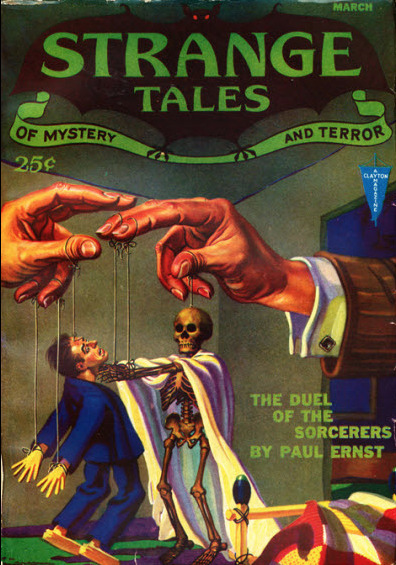
Strange Tales of Mystery and Terror, March 1932, cover art by Hans Waldemar Wessolowski (H. W. Wesso)
50 notes
·
View notes
Photo
Illustration by H. W. Wesso.
It reminds me of a painting by René Magritte.
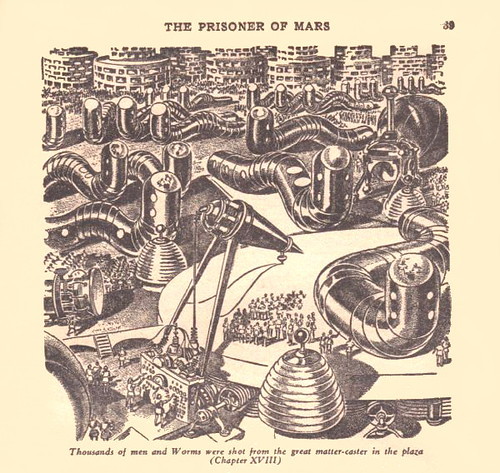
Startling Stories / May 1939 // Illustration 3 https://flic.kr/p/2nC8im6
#hans w wessolowski#h w wesso#edmond hamilton#tharkol lord of the unknown#the prisoner of mars#mars#martian#alien#vehicle#startling stories
25 notes
·
View notes
Text

STRANGE TALES OF MYSTERY AND TERROR Vol 2 #1 (Clayton Magazines, 1932)
Art: H W Wesso aka Hans Waldemar Wessolowski
#h w wesso#art#pulp#pulps#pulp mag#pulp mags#pulp magazine art#pulp magazines#pulp magazine#magicians#sorcerers#horror#pulp horror#1930s horror#1930s pulp#30s horror#30s pulp#strange#strange tales#strange tales of mystery and terror#mysteries#30s mysteries#mystery#thriller#pulp thrillers#Hans Waldemar Wessolowski
18 notes
·
View notes
Photo

ebay
May 1930 issue
cover by H. W. Wessolowski
James P. Olsen, “Great God Grease"
Hugh B. Cave, “The Dagger of Tsiang"
Dudley Hoys, “The Mouths of Hell"
Anderson McCully, “The Reckoning Hour"
H.G. Fry, “’Snake’ Rafferty, Bolshevik"
Frank H. Shaw, “The Man Who Couldn’t Die"
Edgar Daniel Kramer, “Balto"
W. Ryerson Johnson, “Cougar Kelly Gets a Break"
George Tibbitts, “Then Olaf Laughed"
Seattle Mystery Bookshop
#wide world adventures magazine#h.w. wessolowski#pulp art#pulp cover#pulp magazine#crime fiction#james p. olsen#hugh b. cave#dudley hoys#aderson mccully#h.g. fry#frank h. shaw#edgar daniel kramer#w. ryerson johnson#george tibbitts
7 notes
·
View notes
Photo

Hans Waldemar Wessolowski “H. W. Wesso” (1893 - 1947) Astounding Stories (Clayton) Cover art (1930) https://ift.tt/2GP7ZOl March 01, 2019 at 12:46AM
11 notes
·
View notes
Photo
Illustration by H. W. Wesso for Revolt Against Life by F. A. Kummer, Jr.
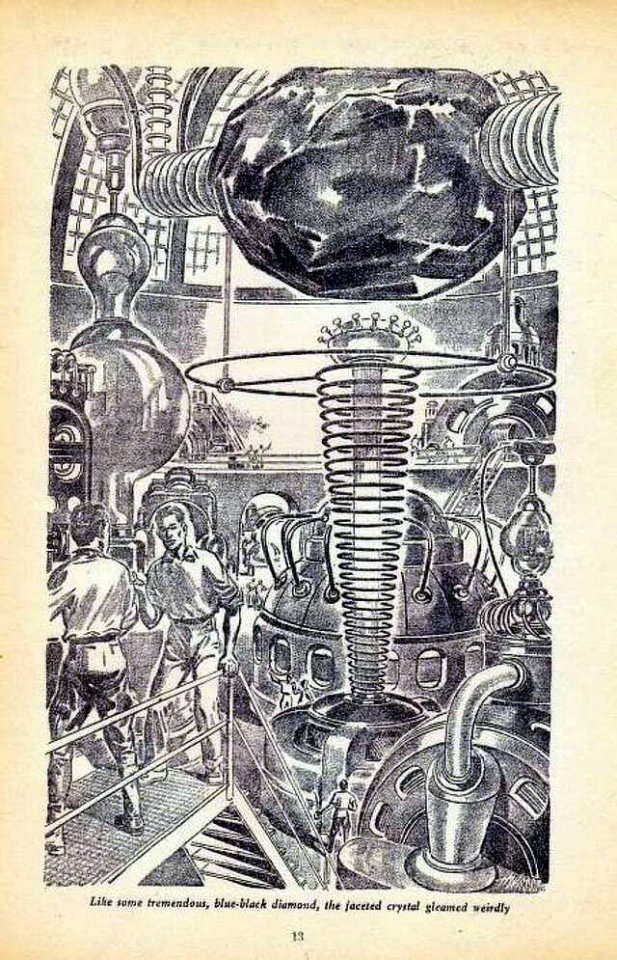
Thrilling Wonder Stories, January 1940.
36 notes
·
View notes
Text
Cover to "Astounding Stories" #31, H. W. Wessolowski, 1932
Cover to “Astounding Stories” #31, H. W. Wessolowski, 1932
Clayton Magazines.
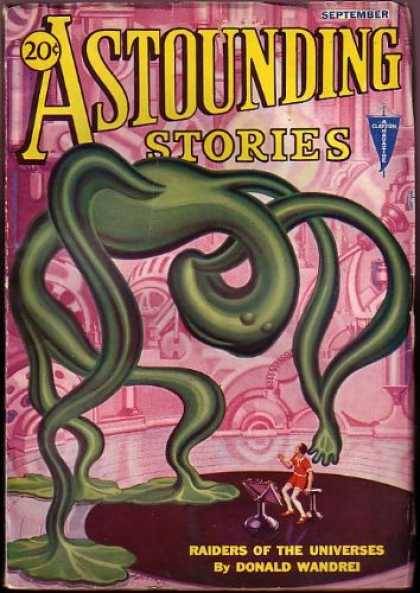
View On WordPress
0 notes
Photo
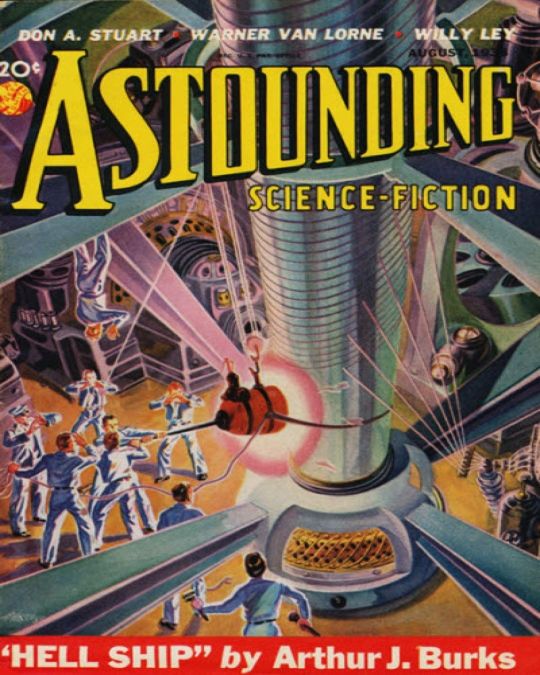
Hired by Street & Smith in 1937, John W. Campbell became the editor of ASTOUNDING STORIES upon F. Orlin Tremaine’s promotion. The new editor was soon making changes to the magazine, or “mutations” as he called them. The first was to rename the pulp ASTOUNDING SCIENCE-FICTION (with the March 1938 issue). Pictured here is the August 1938 issue, featuring cover art by H. W. Wessolowski. It should be noted that John W. Campbell included “Who Goes There” -- one of the last of his Don A. Stuart stories -- in this issue. The story would later be filmed as THE THING FROM ANOTHER WORLD. https://www.instagram.com/p/B9DPpqpAMUp/?igshid=18wydouhqyegk
0 notes
Photo

The Gate to Xoran Published: January 1931 Writer: Hal K. Wells Cover Artist: H. W. Wesso Artwork: Hans Waldemar Wessolowski A strange man of metal comes to Earth on a dreadful mission.
#sci fi pulp#pulp magazine#retro scifi#retro science fiction#sci fi & fantasy#astounding stories#hal k wells#h w wesso#Hans Waldemar Wessolowsk
0 notes
Text
Cover art by H. W. Wesso.

“Chill, I got this.”
#hans w wessolowski#h w wesso#hal k wells#h k wells#the cavern of the shining ones#astounding stories#robot#android#alien#monster
120 notes
·
View notes
Photo

Illustration by H. W. Wesso (Hans Waldemar Wessolowski) for The Hungry Guinea-Pig by Miles J. Breuer.
Published in Astounding Stories #1, 1930
#the hungry guinea-pig#h.w. wesso#miles j. breuer#pulp#interior art#illustration#giant#monster#animal horror#guinea pig
63 notes
·
View notes
Photo

Following the November 1937 issue of ASTOUNDING STORIES — with cover art by H. W. Wessolowski — F. Orlin Tremaine was promoted to editorial director at Street & Smith, a position he held for about a year before resigning to explore new avenues. Although the best years of the magazine were yet to come, Tremaine had transformed the former Clayton pulp into the leading magazine in the science fiction field. There it would stay for at least the two more decades. https://www.instagram.com/p/B9DN7y_nfuz/?igshid=ehng7c2y25zv
0 notes
Photo

In just a few months, ANALOG SCIENCE FICTION AND FACT will celebrate its 90th anniversary. Watch for its January 2020 issue, its 1033rd issue. Here’s where it started back in 1930. And where we started . . . The cover art is by H. W. Wessolowski. https://www.instagram.com/p/B2hZBEWhbfB/?igshid=i8qmkyibn18t
0 notes
Photo

Wanting to create a science-fiction magazine for mature readers, John Campbell asked his authors to help readers “experience the new worlds that science might offer . . . . stories to read just as though they were contemporary stories in a future magazine.” Pictured here is the August 1938 issue, featuring cover art by H. W. Wessolowski. https://www.instagram.com/p/B1r2jeYh-LH/?igshid=172lmhkn5q3mj
0 notes